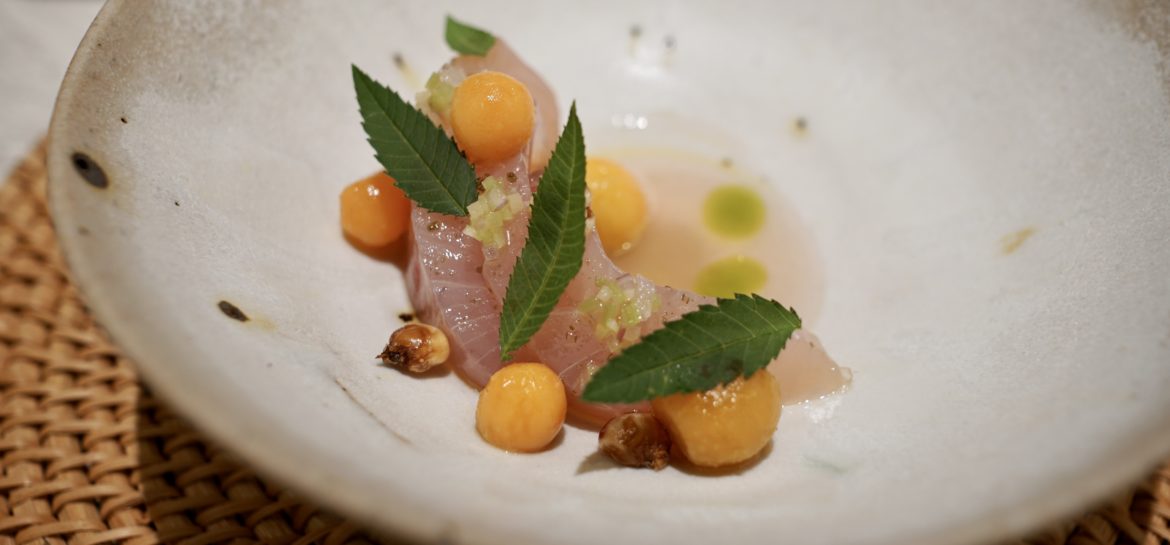
ZEA
Add: 台北市大安區仁愛路四段300巷20弄5號
No. 5, Alley 20, Lane 300, Section 4, Ren’ai Rd, Taipei
Hours: Wed-Sun 6:30-10:30pm (closed Mon & Tue)
Price: [Tasting Menu] 4,500 NTD +10% [Pairing] 1,800 + 10%
Visited: May 2022
ZEA, the hot new Latin American restaurant in town, has been stirring up a warm buzz amongst industry professionals and curious foodies since its opening in May, and for good reasons.
To start, Latin American cuisine, especially at the fine dining level, is a rare find in Taiwan. ZEA is that breath of fresh air which we’ve all been craving for, the possibility to try something exotically foreign even during a time when traveling is particularly difficult.
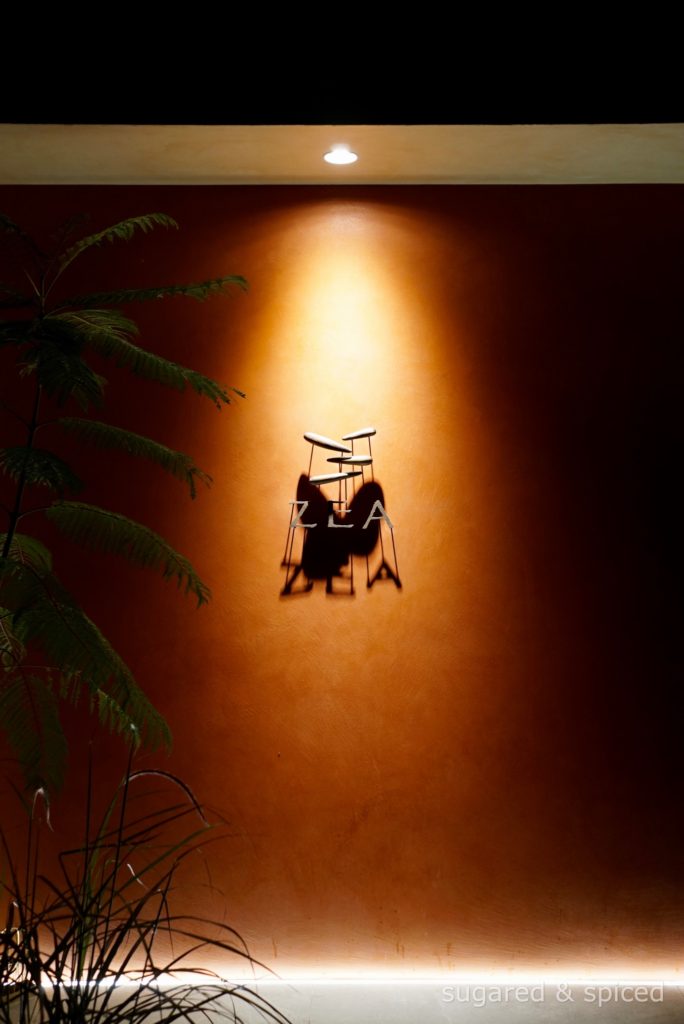
In the kitchen is Argentinian chef Joaquin Elizondo Hourbeigt, who has honed his skills in Buenos Aires, Paris, and most recently Hong Kong, where he was sous chef to Ricardo Chaneton at Mono, Asia’s first Michelin-starred Latin American restaurant.
Joaquin had started ZEA with his restaurant partner and wife Di-Harn Yeh, who greeted us warmly at the door. (Incidentally, the pair has a really cute love story, ask them about it next time you dine there.) 14 bar seats and a semi private room for 10 on the side, the space was cheerfully-lit, with Latin American music dancing in the air. Lively. Relaxed. Down to earth.
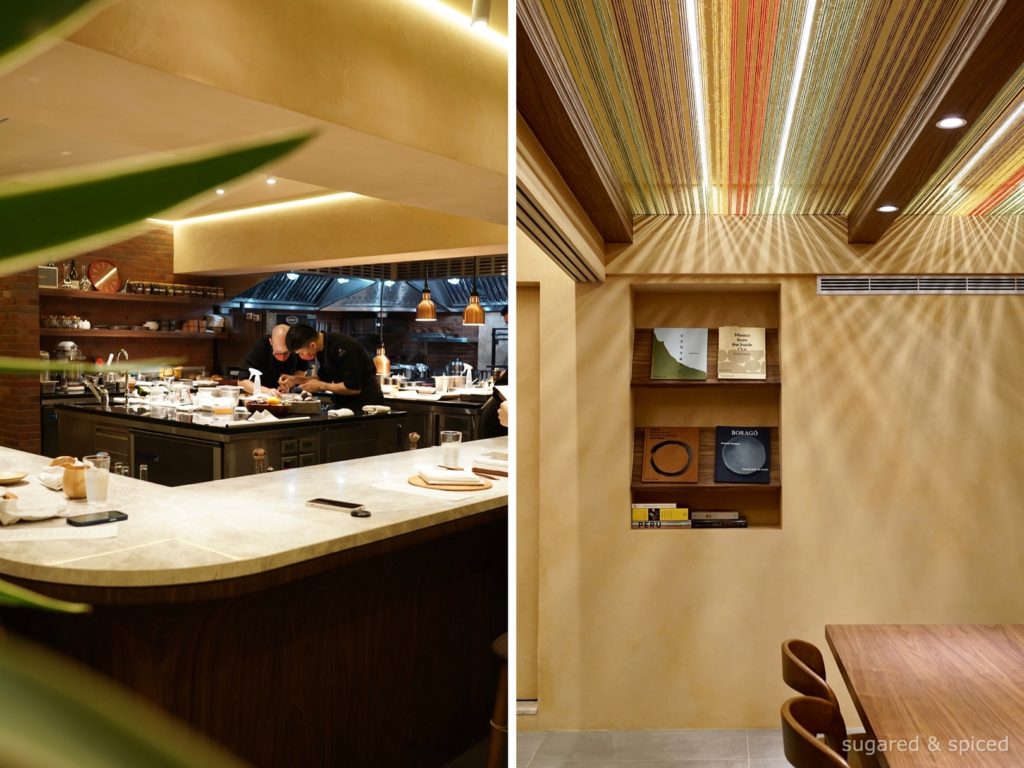
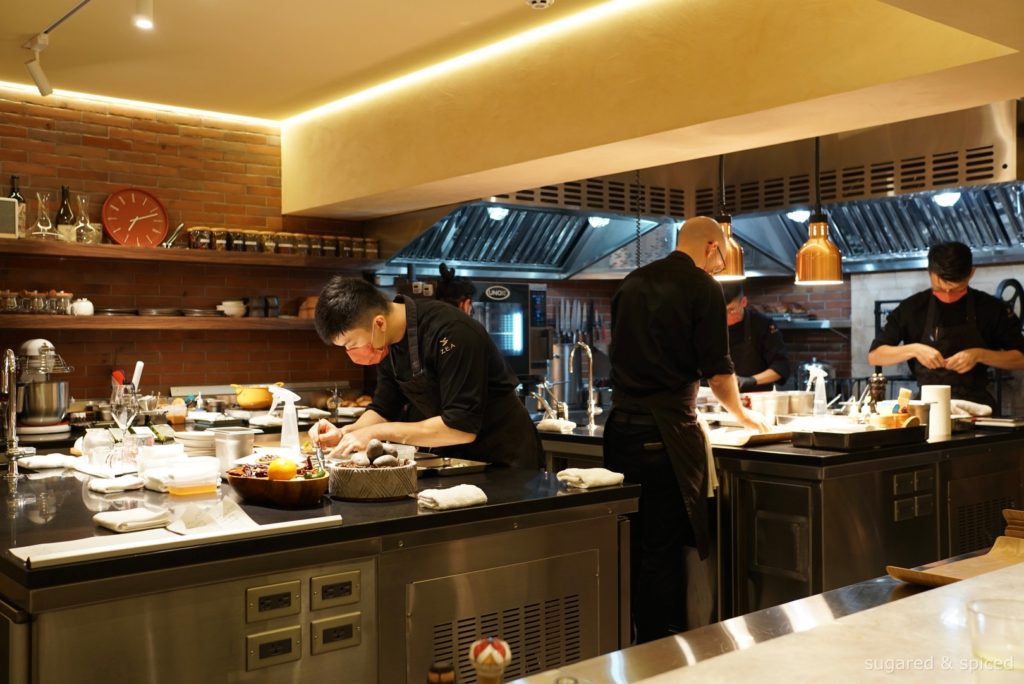
The 11-course menu started with a trio of picoteo, each triggering a tiny frisson of pleasure. The first was a tostada made with Taiwanese purple corn, topped with crab and nopales salsa. Nopales, as I learned that evening, are the pads of the prickly pear cactus, a common ingredient in Mexican cuisine. The texture is thick and meaty, with a mild flavor that’s reminiscent of asparagus and okra.
Then there’s a scallop aguachile. Aguachile, literally chili water (with added flavors from cilantro, onion, lime, etc.), was used to dress a refreshing mix of diced scallops and cucumber, all daintily wrapped in a thin slice of jicama.
Followed by chipa, a Paraguayan cheese bread with a dense chewy texture, here made with Taiwan’s very own 9 months aged Formosa Original Cheese by Dida Cheese.
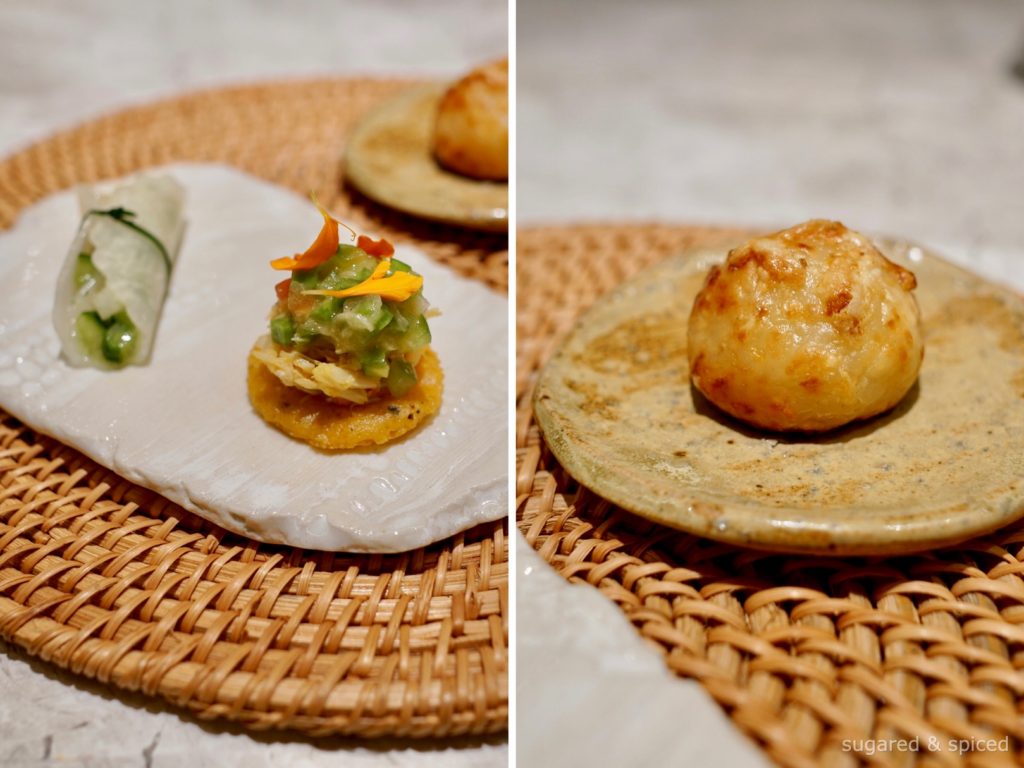
The second course was a ceviche of hamachi, cured with kombu salt for at least 4 days until the flesh is tender. On the plate, the translucent slices were adorned with mini orbs of sweet potato confit, fried kernels of corn, ginger salsa, marigold leaves, and “tiger’s milk”, a citrus-based, spicy marinade used to cure the fish in classic Peruvian ceviche. The hamachi was smooth and plump, with piercing notes of lime and exhilarating sparks of ginger and chilies…just the idea of it is enough to make my mouth water again.
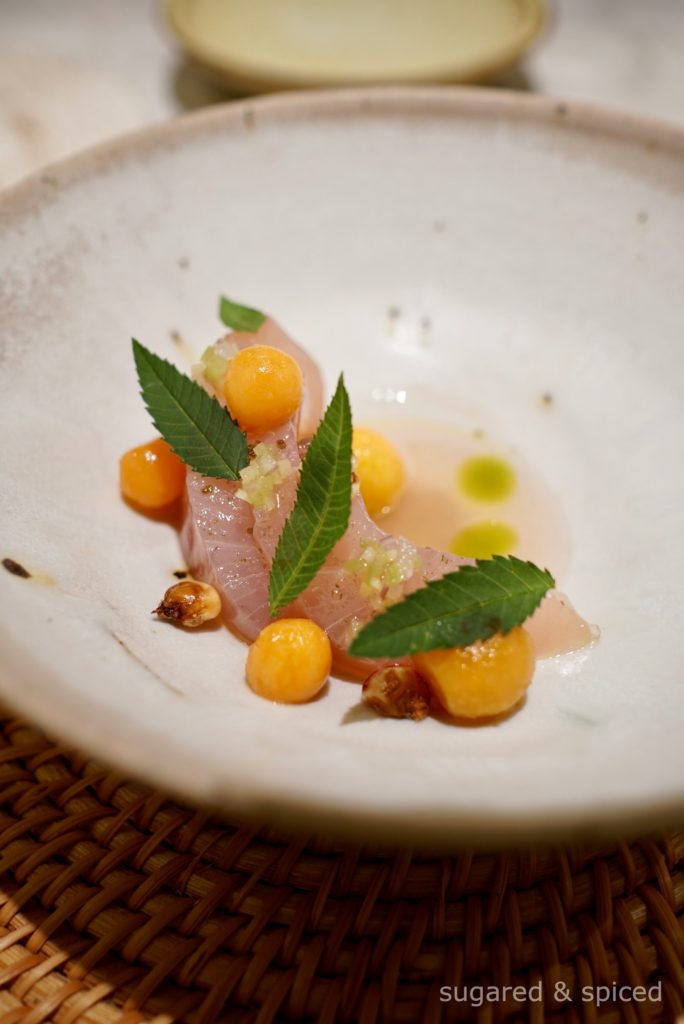
House made bread, served with a selection of single varietal olive oil from Zuccardi Family.
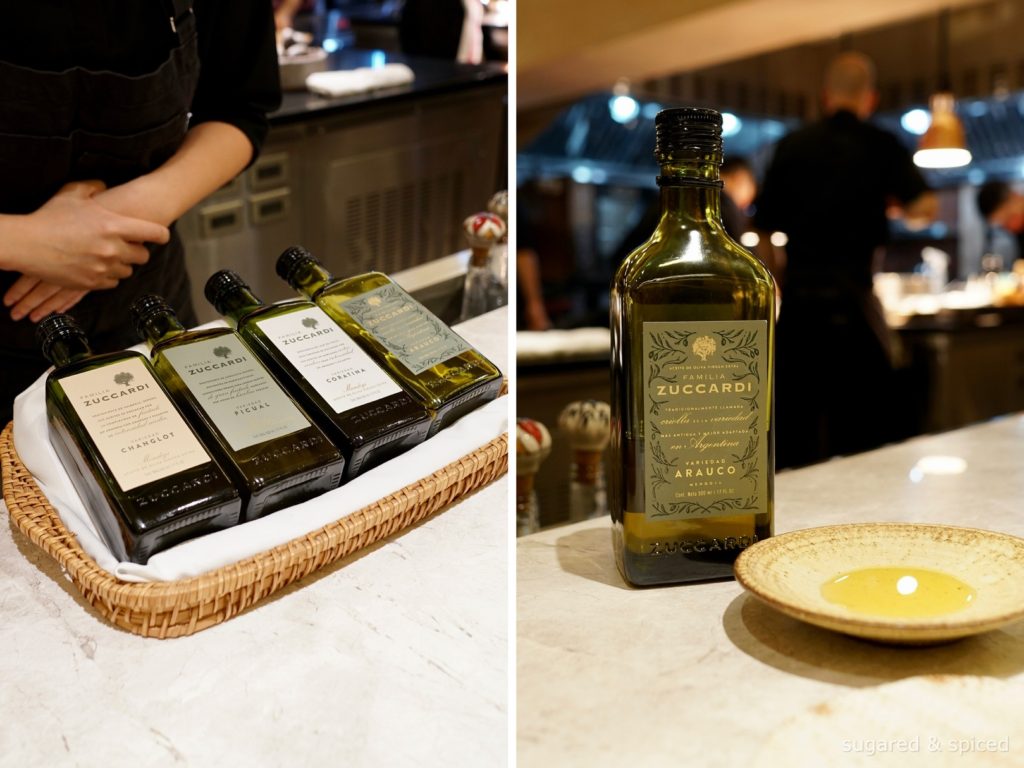
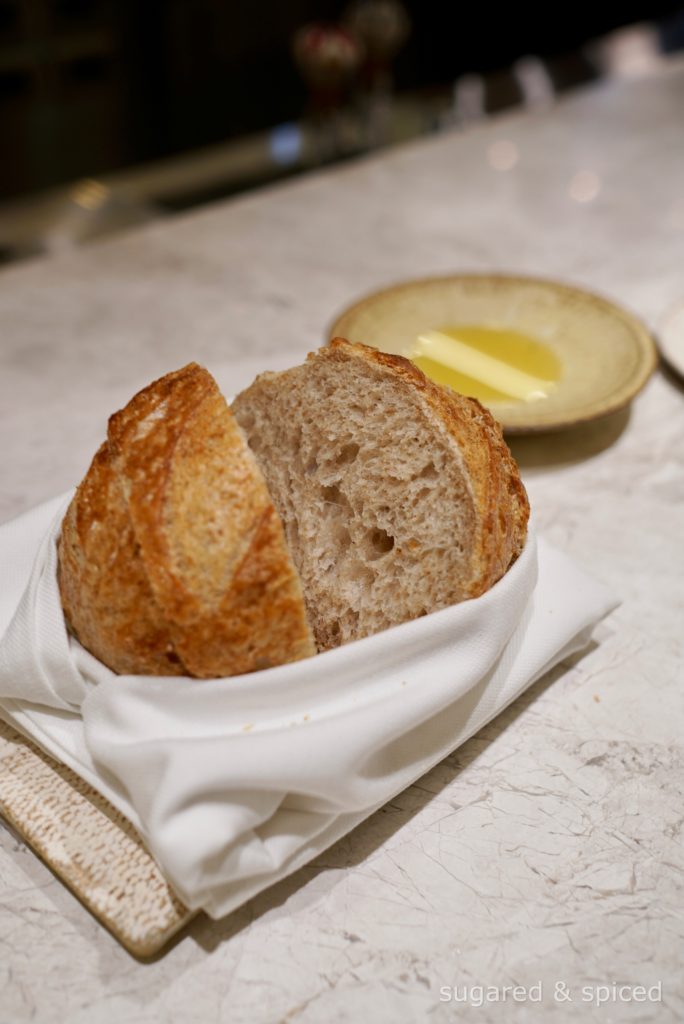
Next was a small heap of purple Andes potato (grown in Taichung), cooked whole in embers so that the skin is charred while the interior remains creamy and moist. The charred and toasted skin was then used to make a reduction with chicken stock, later drizzled back onto the potatoes. The earthy ensemble was completed with a dollop of mole, a rich sauce that combines a long list of ingredients including chilis, spices, nuts, and…dark chocolate!
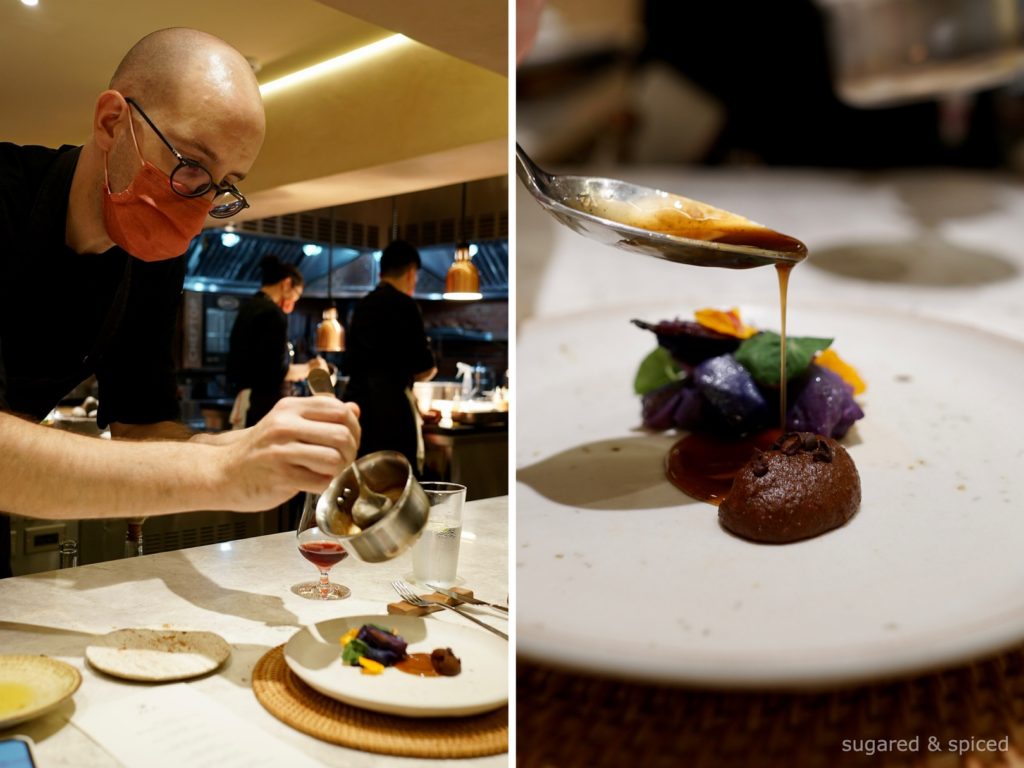
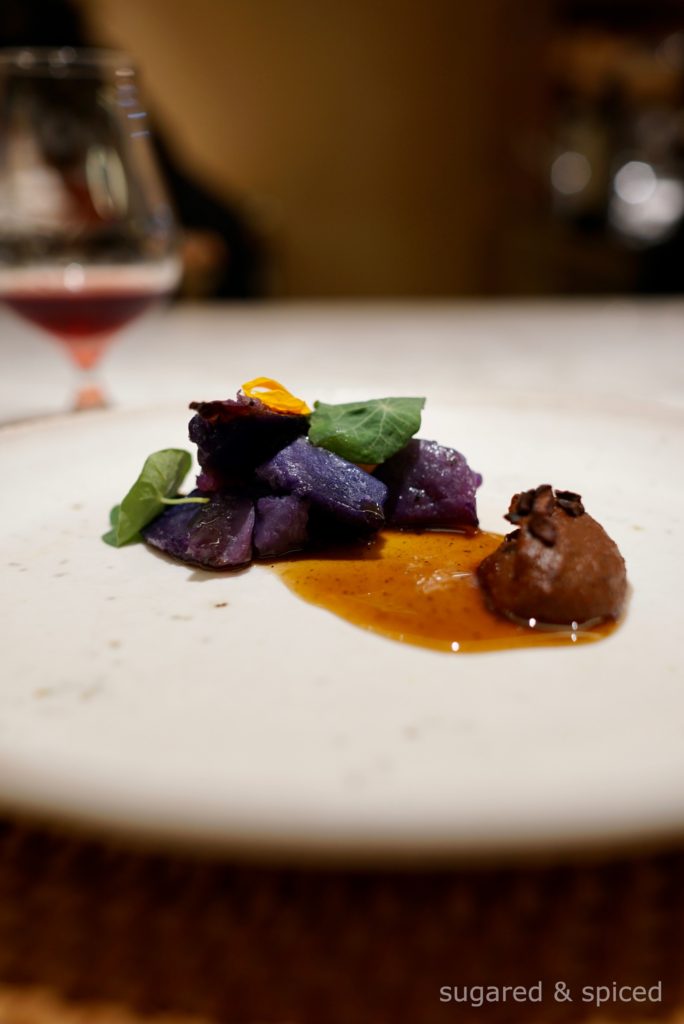
Fifth course, a vibrant dish of red prawns with yellow pepper and chayote confit. The prawns had only been roasted slightly to accentuate the flavor but leaving the texture mostly raw, accompanied by an aromatic and bright orange stock made out of shrimp heads and aji Amarillo.
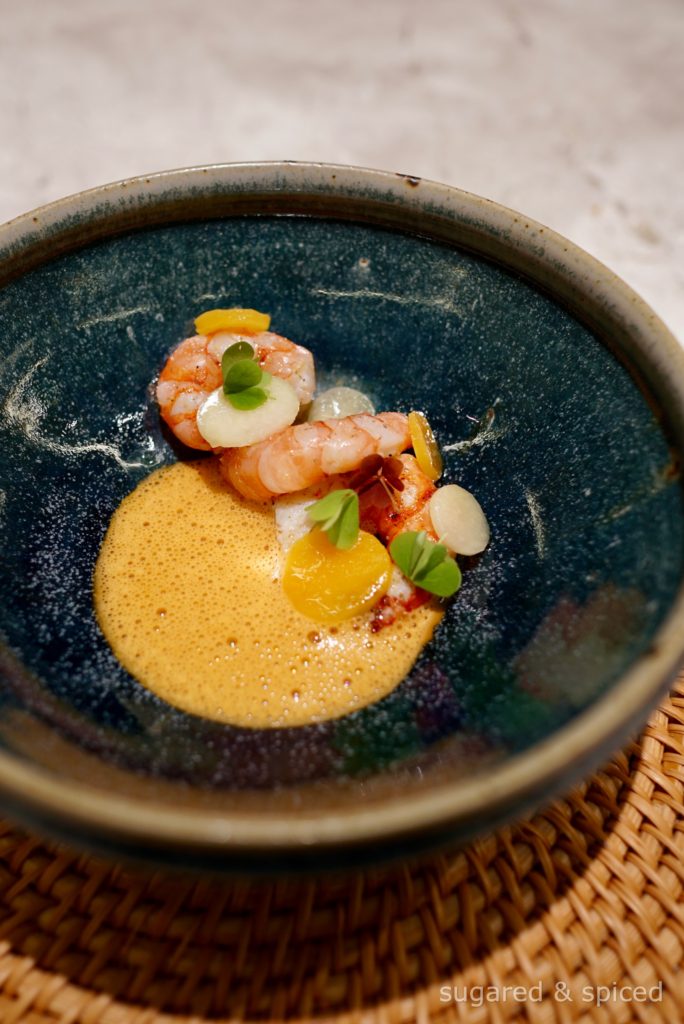
Spanish mackerel with bamboo shoots and mate tea hollandaise. The fish, soft and moist in texture, had been brushed with adobo, which consists of tomatoes, onions, garlic, and árbol chili amongst other spices, all burned over a comal. It may sound intense, but the resulting flavor was actually quite delicate, it’s one of the dishes I wish to taste again to recapture its impression.
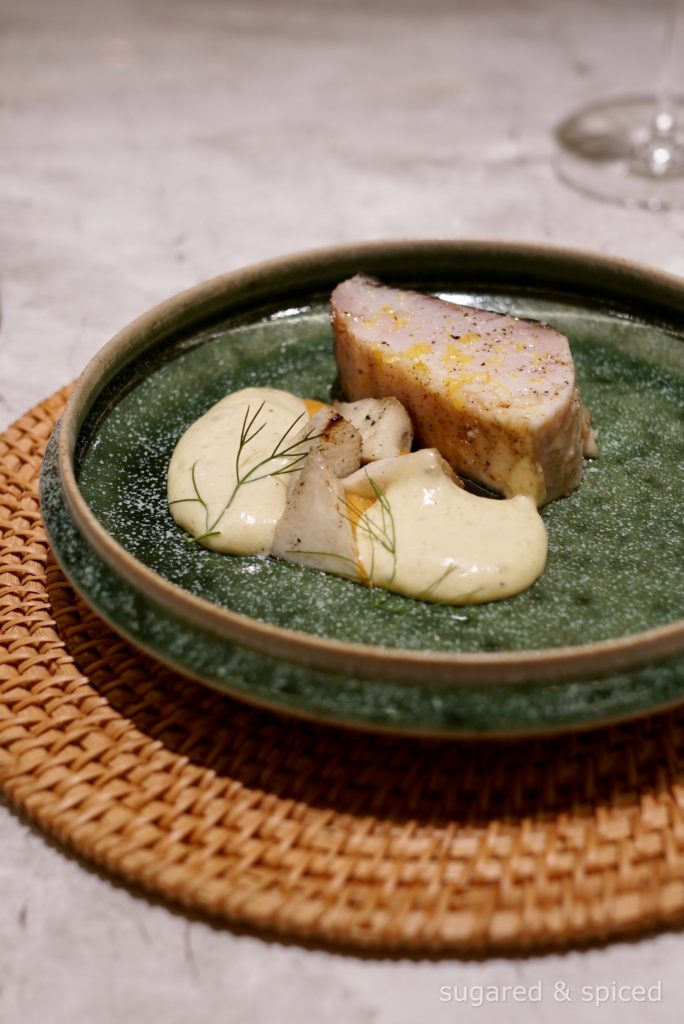
I truly enjoyed the next dish, patitas con mani, which translates to pork’s feet with peanuts. The original Peruvian version is served with rice, but Joaquin replaced that with diced squid, then tossed in some turnips and sweet peppers for a lighter take. The dressing, salsa criolla, adds a wonderful zing of flavor to the melange, and I found myself dipping my spoon in again and again, eager for one more taste.
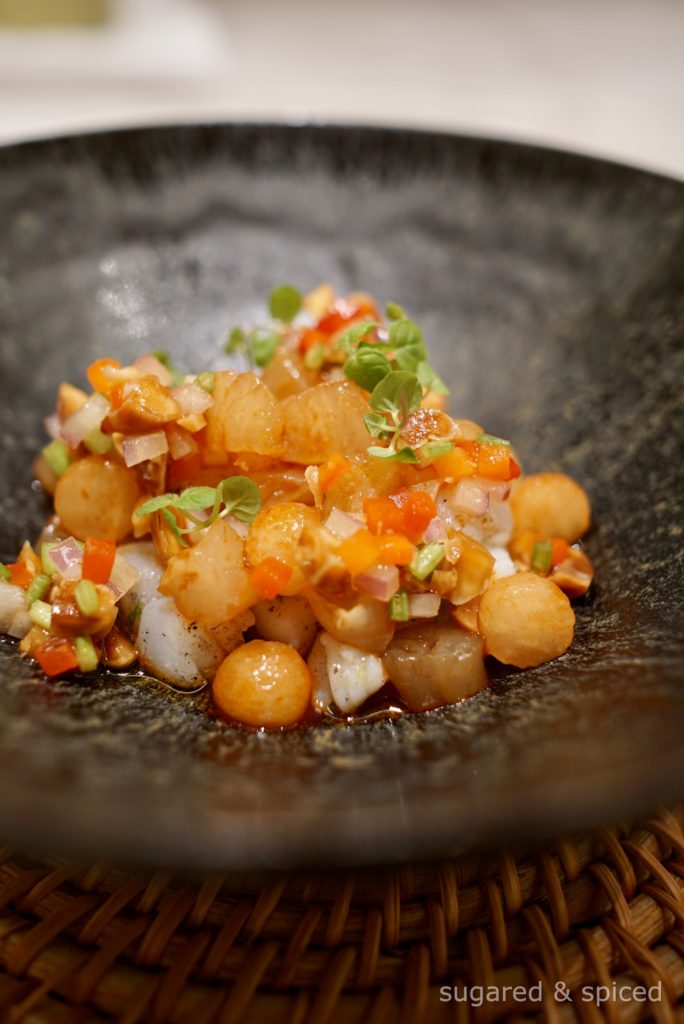
We then got to choose from a gorgeous selection of hand-crafted knives by Ramo Filos of Argentina…
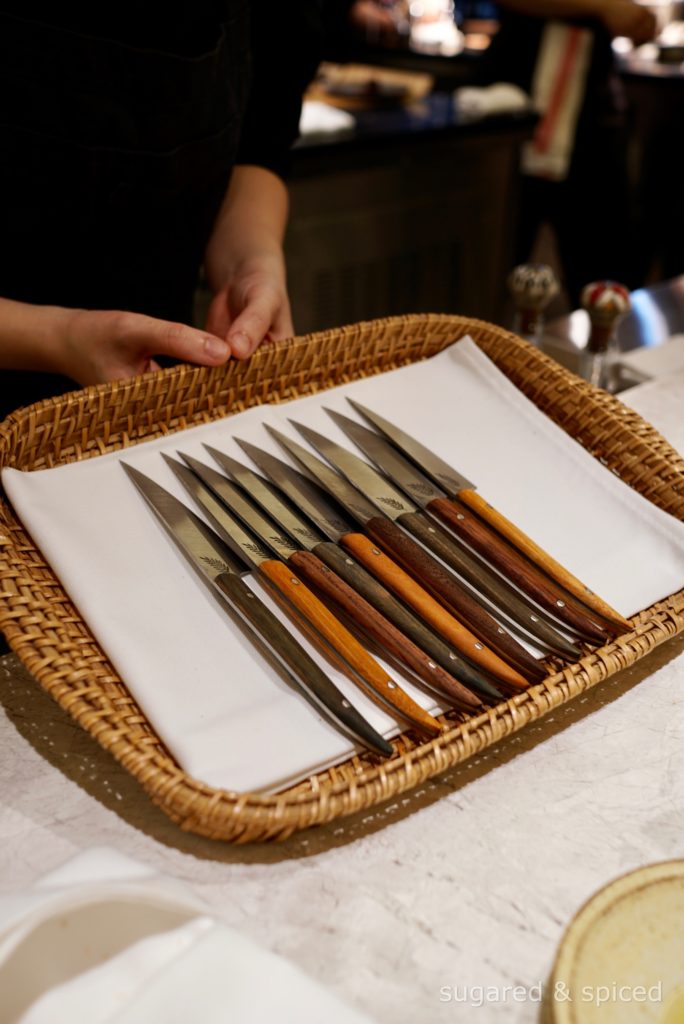
…for this! Duck from Changhua, aged for 10 days then brushed with a mixture of orange juice, ancho chilis, and achiote paste, before being roasted to a glistening perfection.
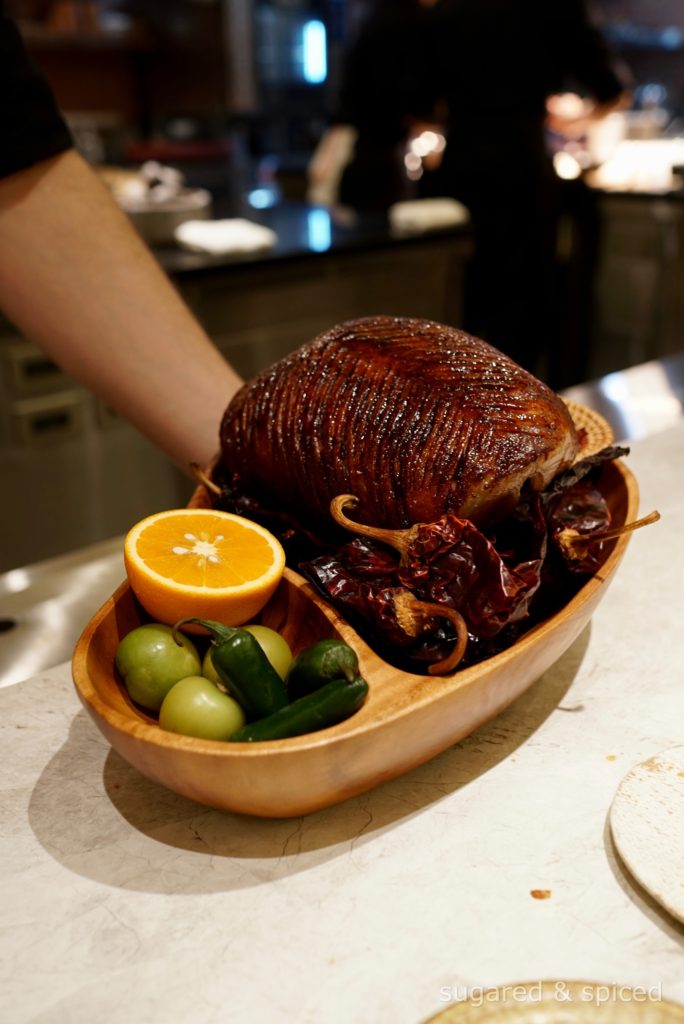
Served with tamales, a corn dumpling cooked inside banana leaves, and a refreshing salsa verde of avocado and tomatillos.
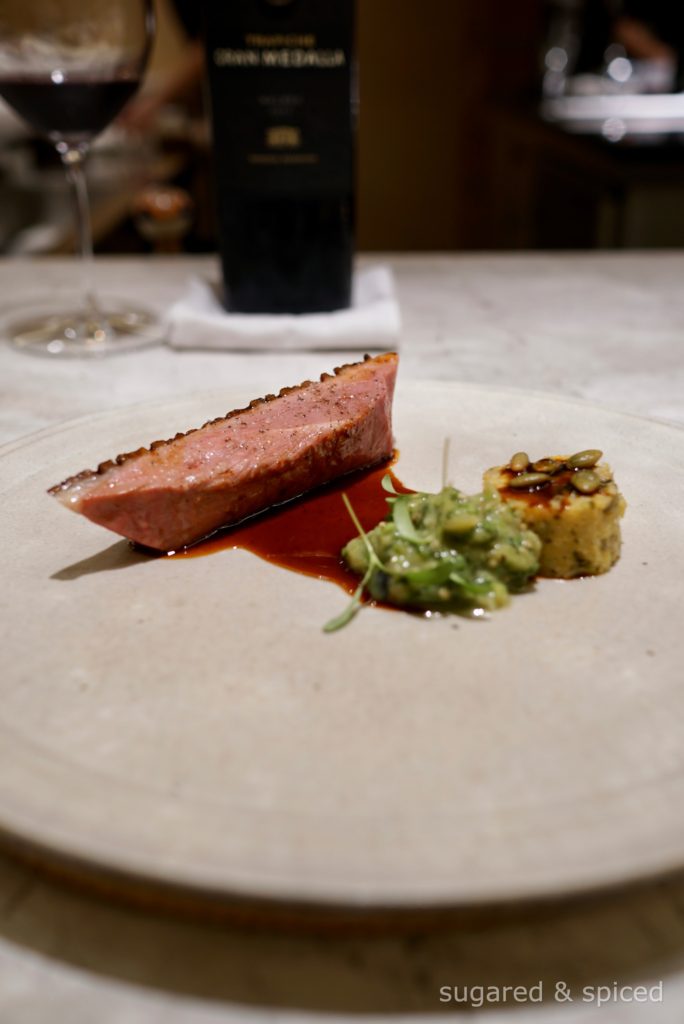
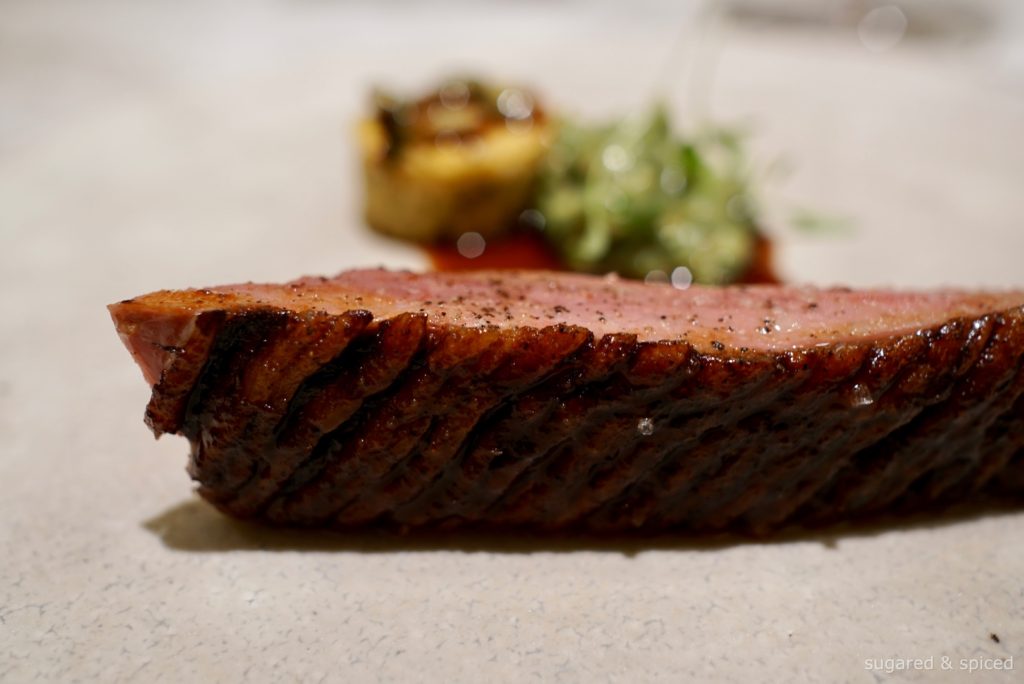
There was also mini duck empanada, an off-menu surprise. Simple as it looked, there was much thought incorporated into its tiny body – the dough was added with a dash of sweet pepper for extra flavors (hence the slightly reddish hue), and the filling had green olives and scallions in addition to duck leg meat for extra moisture. Served piping hot, it’s the kind of flavor-forward food that hits the spot for me.
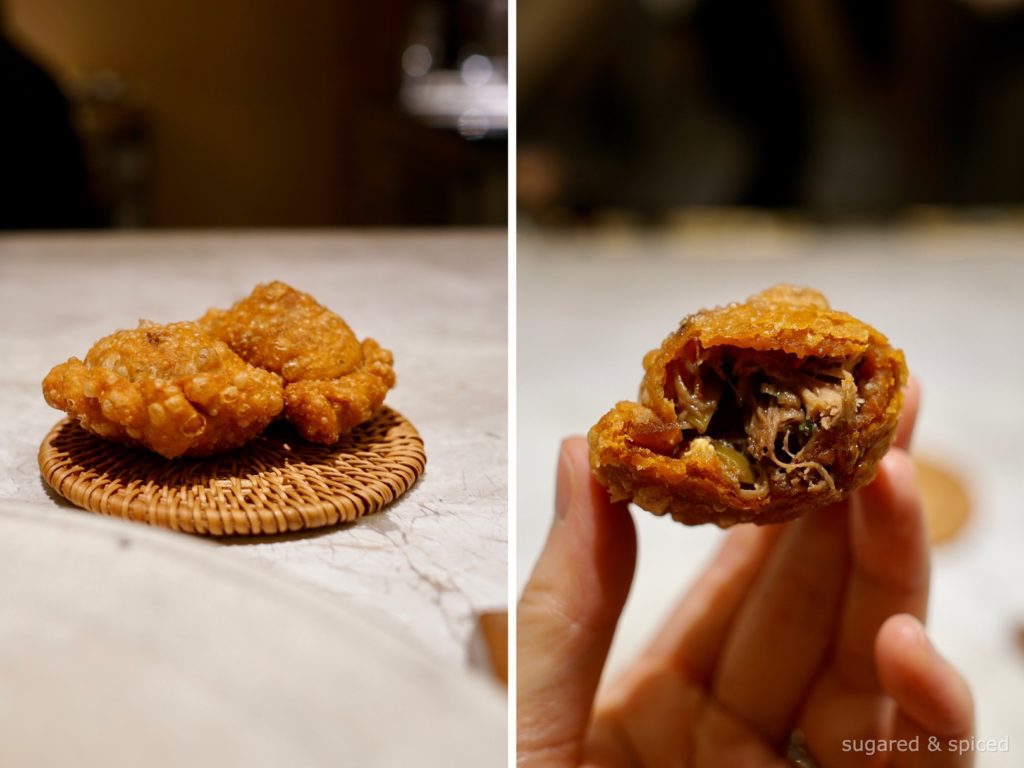
Pre-dessert was raspado, which is the Latin American version of shaved ice, with hibiscus syrup, blueberry jam, a bit of long pepper, and queso fresco from Chile.
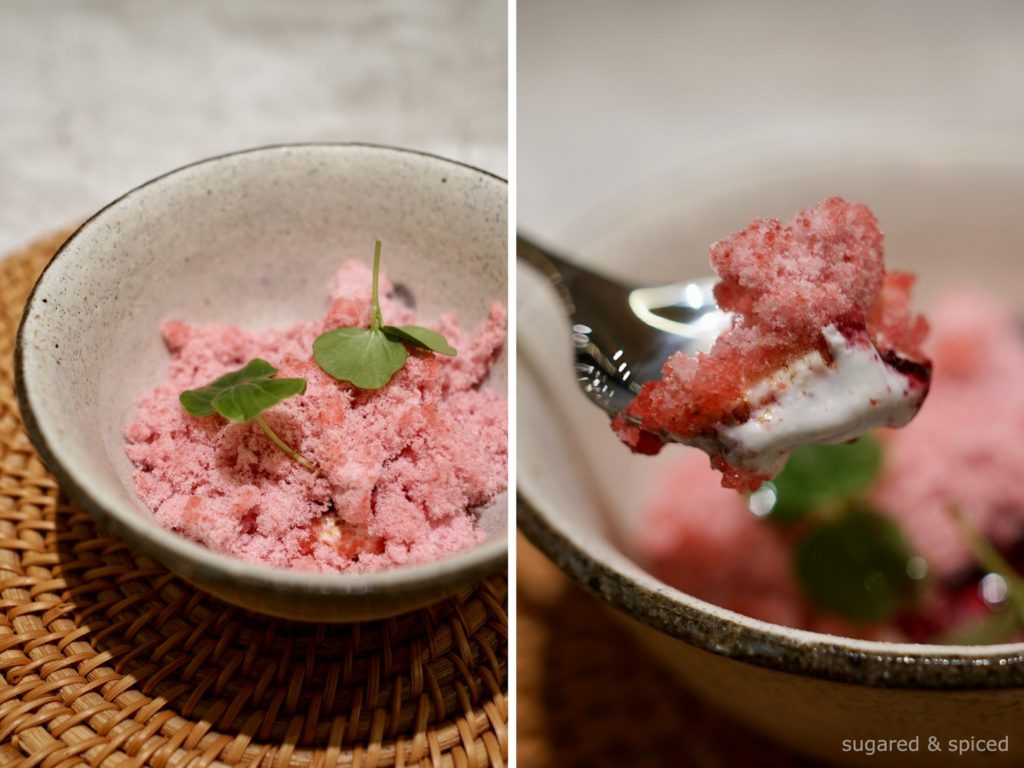
The main dessert was a sphere of chocolate mousse made from Michel Cluizel’s Dark 70% San Martin, a single origin cacao harvested from the edge of the Peruvian Amazonian jungle. Served with cashew nut ice cream and praliné for textural contrast.
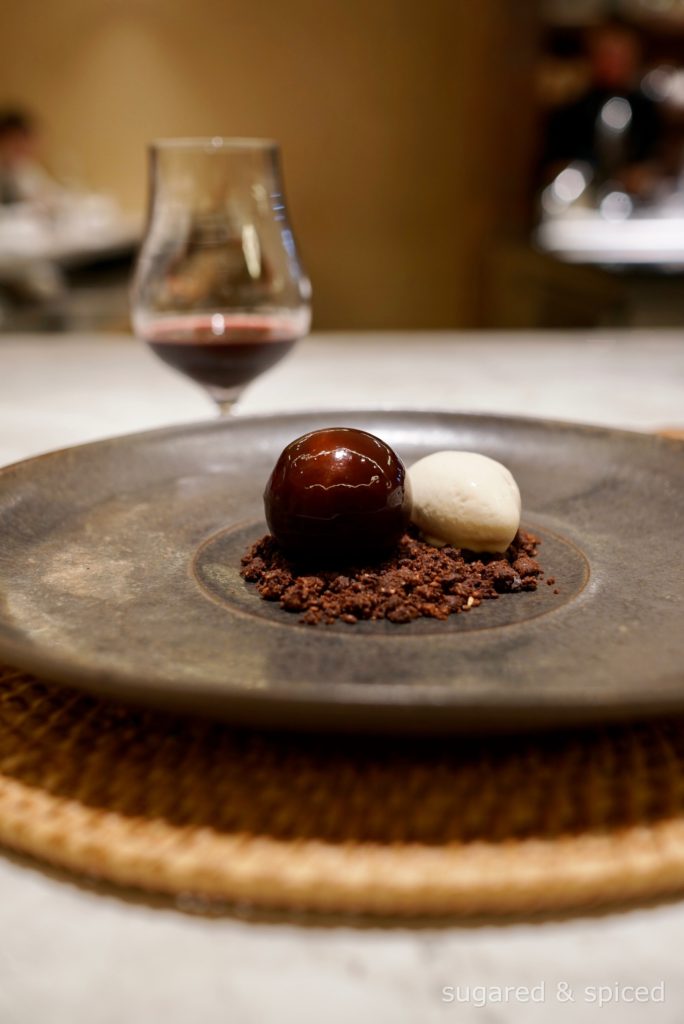
To finish, a trio of sweet bites: picaron, Mexican cacao & chipotle, brigadeiro. I was particularly interested in the picaron, a Peruvian doughnut made from squash and sweet potato, dotted with a fruity syrup made from mango, pineapple, and orange.
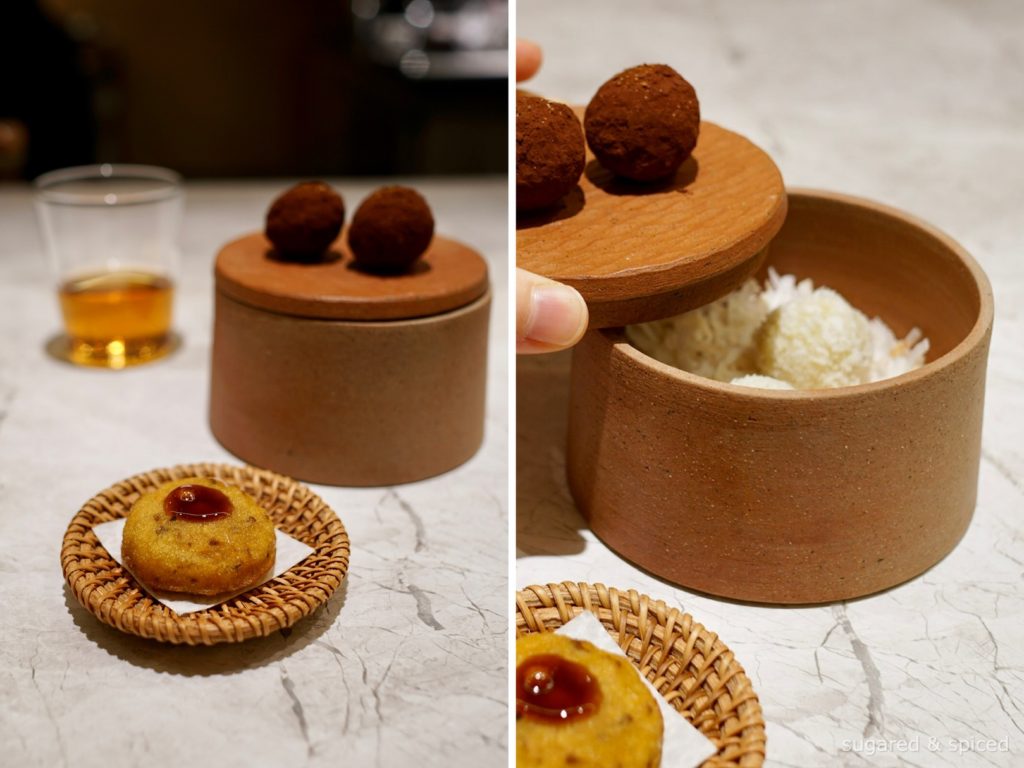
Alcohol pairing of the evening was chosen entirely from the Latin American region. The sequence was rather untraditional – a red wine early in the menu, a sweet pink wine in the middle, then going back to a crisp white…kept me on my toes.
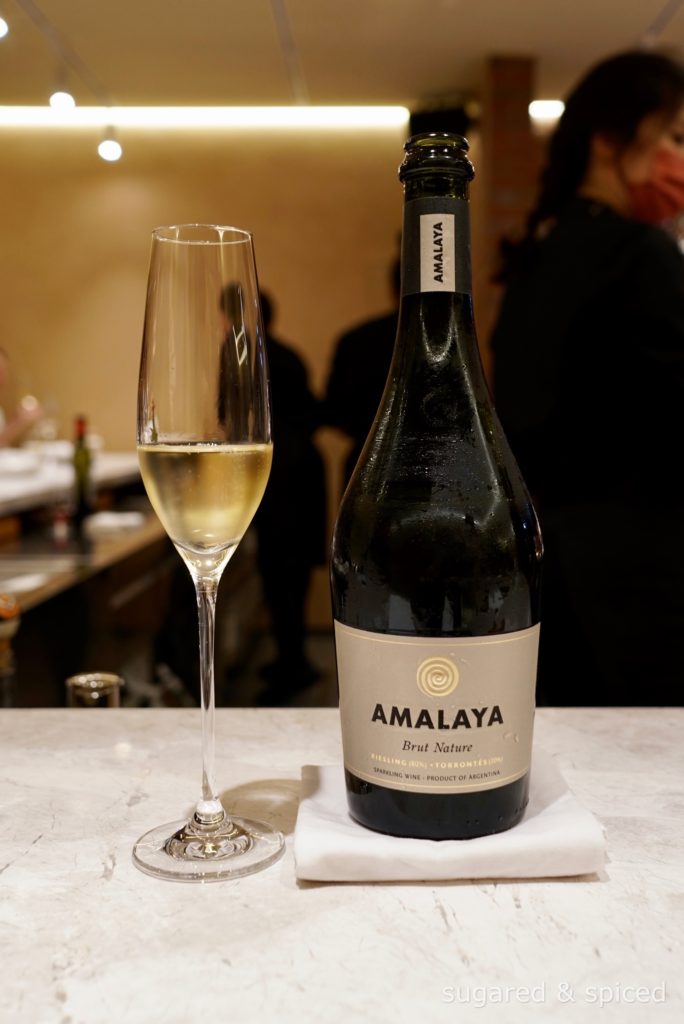
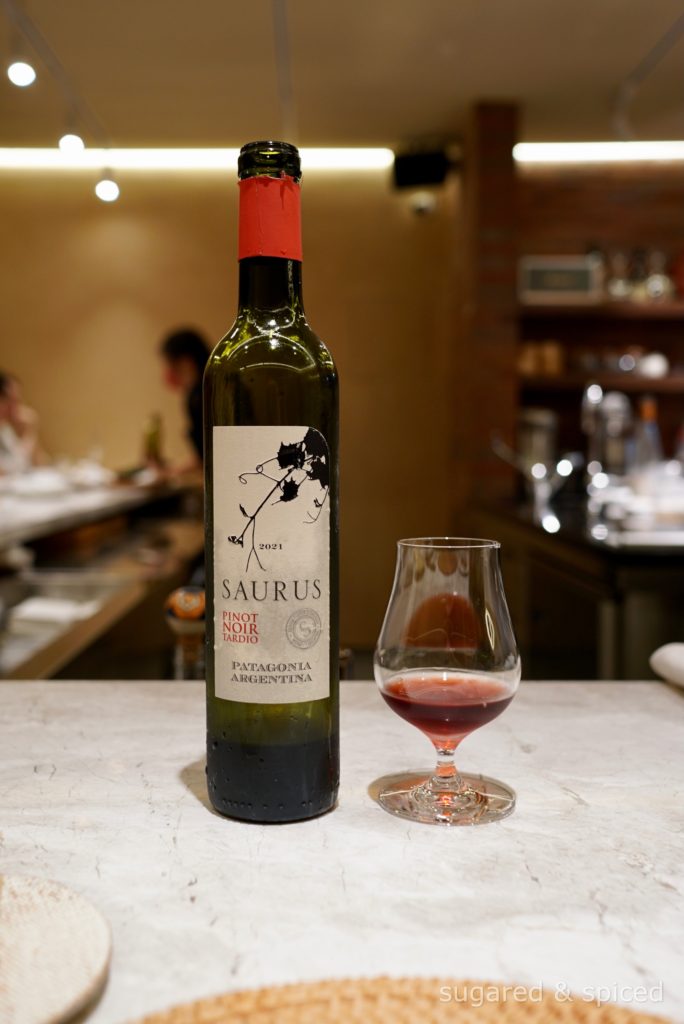
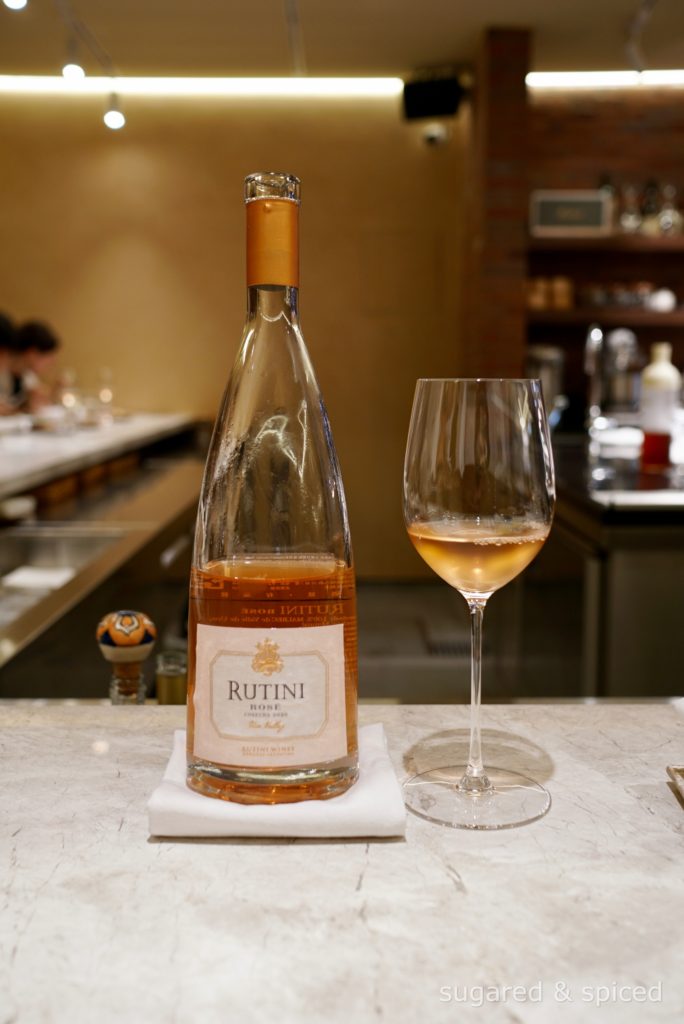
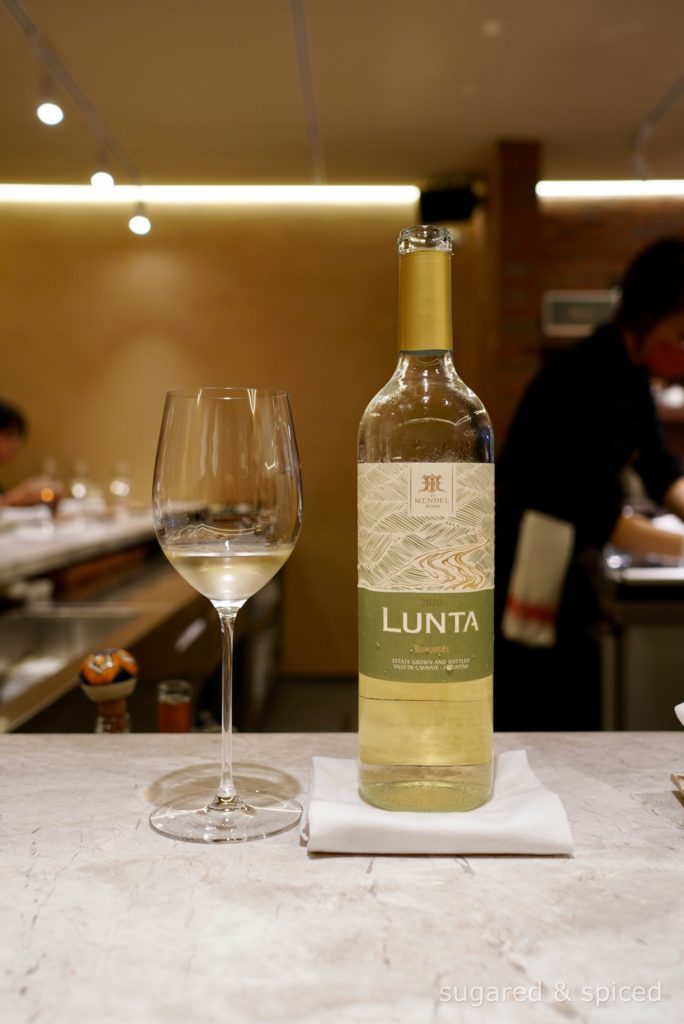
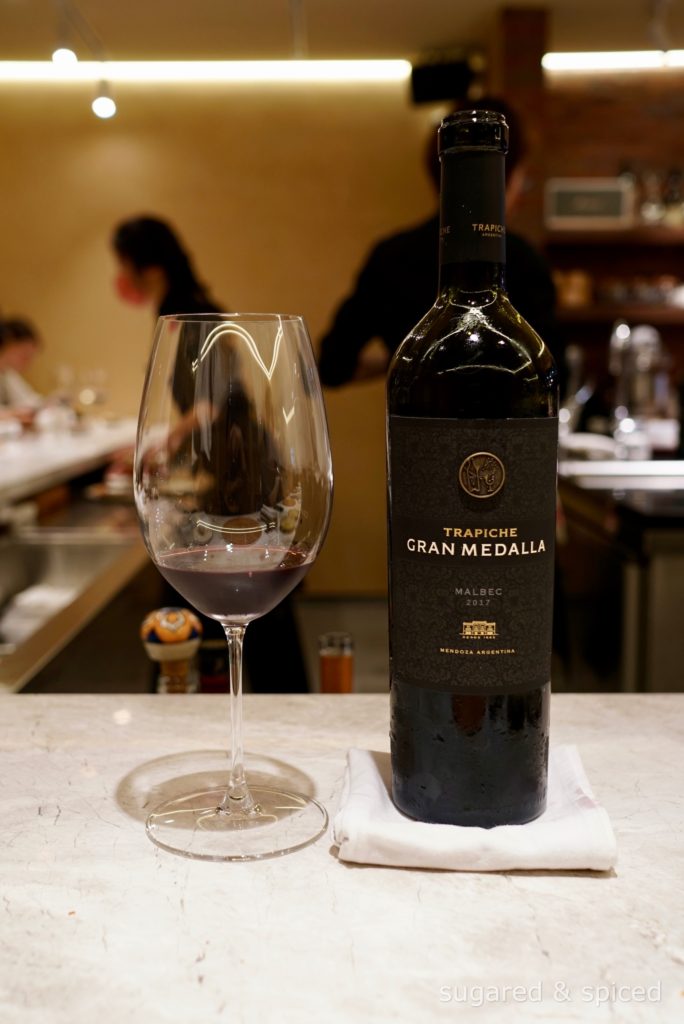
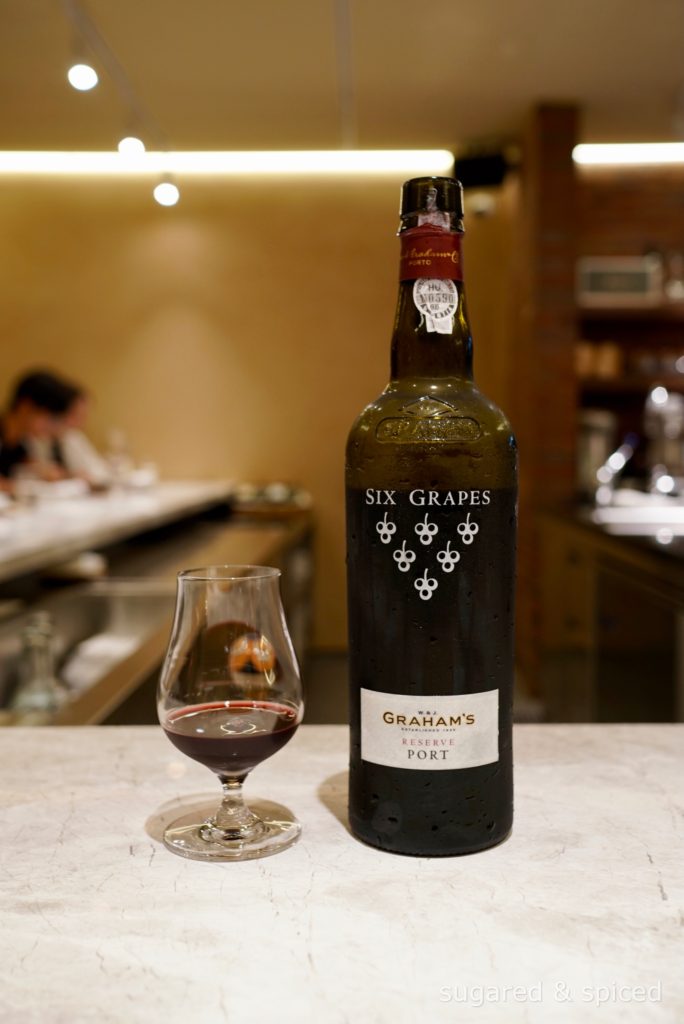
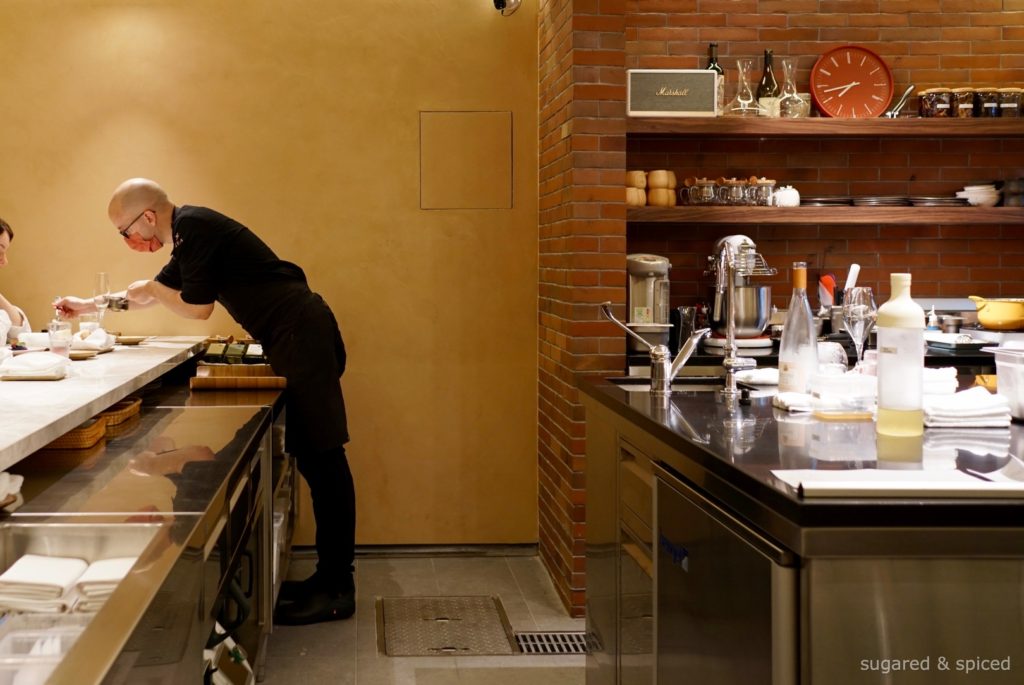
And that marked the end of this culinary journey in Latin America. I imagine that each diner takes something different away from this experience. For me, it was a delicious introduction / revelation on what “modern Latin American dining” can be. It was packed with an astonishing amount of new information, yet still leaving me eager to find out more. That feeling of having just returned from a great trip and already dreaming about going back.
The restaurant is still at the beginning of its operation, with some kinks to smooth out for sure, but the young team is talented and passionate about what they do, so there’s a lot to look forward to. See you at the next menu.